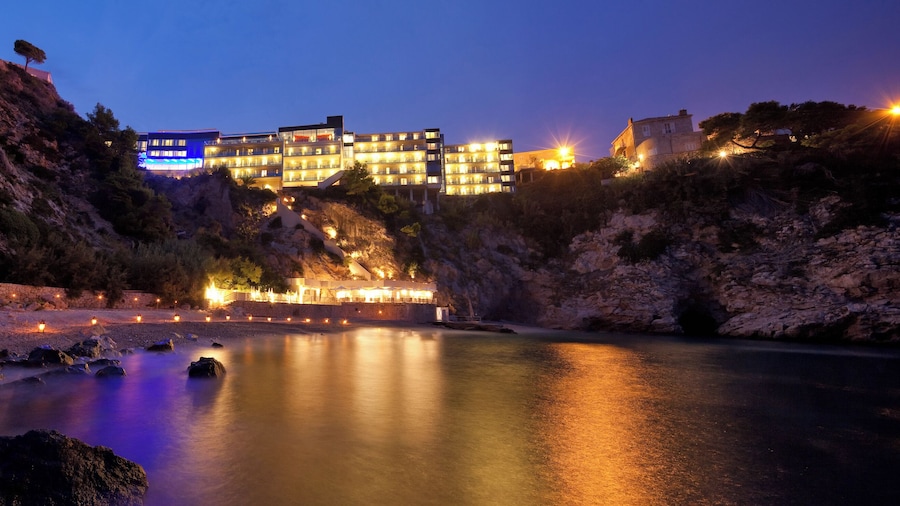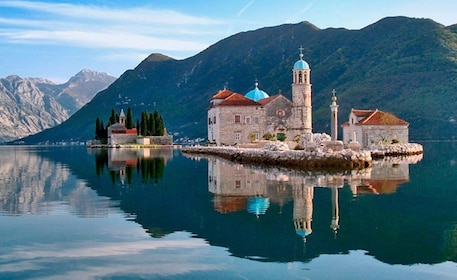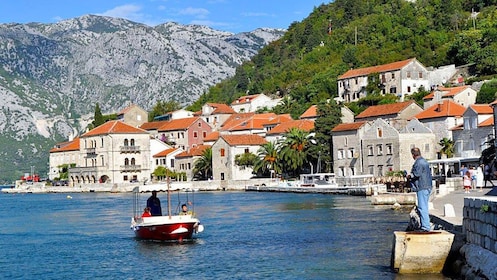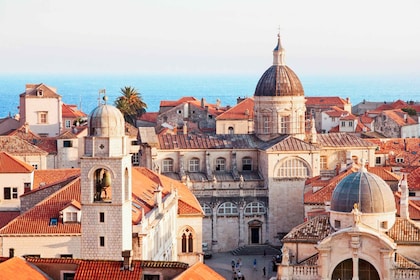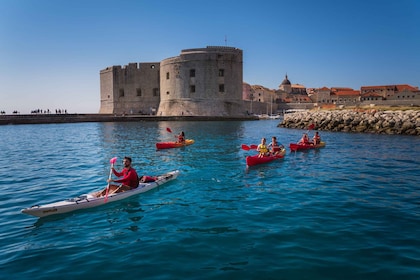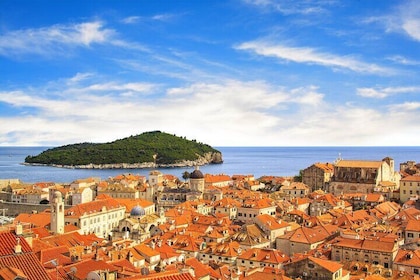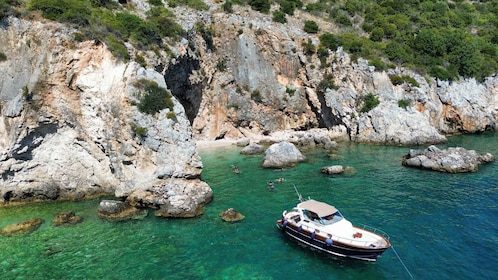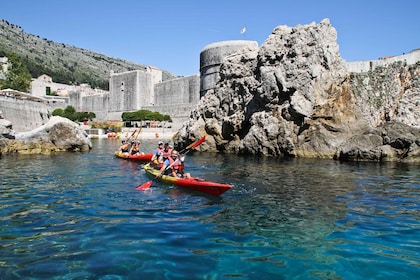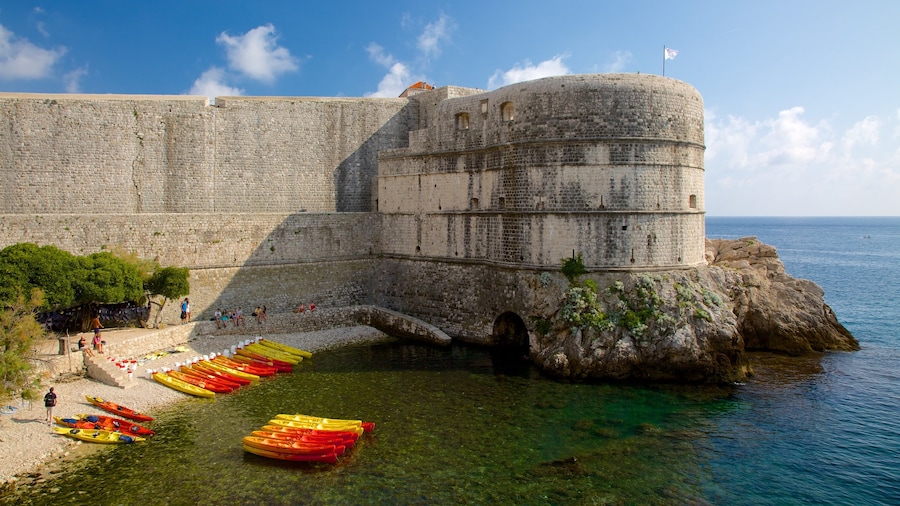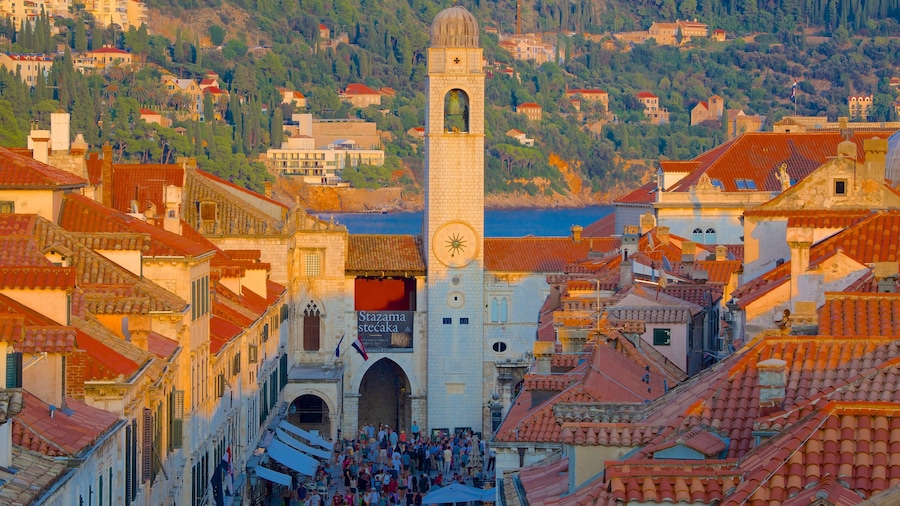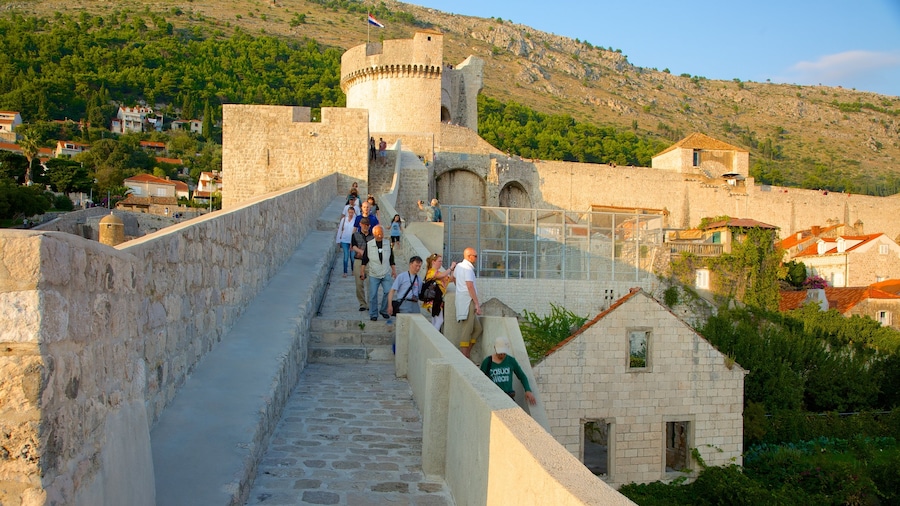Start your tour of Dubrovnik’s old town by walking through this majestic entrance, once an important defensive structure.
Pile Gate is the main entrance to Dubrovnik’s old town and is situated on its western wall. For many visitors, the portal is their first encounter with the neighborhood’s gorgeous medieval architecture.
The stone assembly consists of an outer gate constructed in 1537 and an inner gate dating back to 1460. Historically, both gates were reached by crossing over a long wooden drawbridge which has been replaced by a stone bridge. Napoleon famously entered the city through this set of gates in 1806, signaling the beginning of the end of the Dubrovnik Republic.
As you cross the bridge, look down at the open space where a moat once flowed. Gaze at the statues of St. Blaise, which are found on both the inner and outer gates. The statue resting over the gate’s renaissance arch is one of the city’s oldest icons of its patron saint. The sculpted figure dates back to the construction of the gates. The statue found in the niche of the interior gate was carved by 20th century Croatian sculptor Ivan Mestrovic.
Pass through the first gate and observe the weights that were once used to raise the drawbridge at night to keep out unwelcome visitors. Observe the commemorative plaque between the inner and outer gates. It records the damage caused during the Siege of Dubrovnik in 1991 and 1992.
Once you are through the gates, you will find yourself by the old town’s pedestrianized main street known as Placa or the Stradun. This attractive thoroughfare is lined with picturesque 17th-century buildings.
Pile Gate is located at the western entrance of Dubrovnik’s old town, and is a popular drop-off point for buses and taxis.




